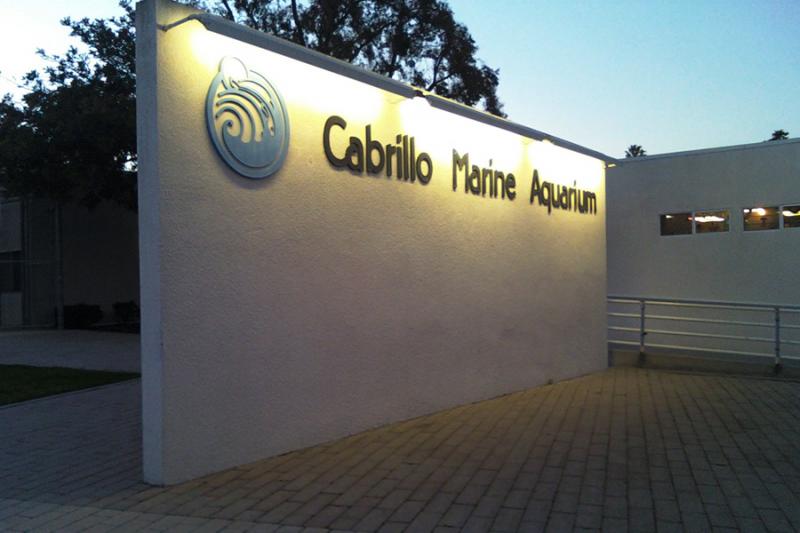Grunion Run Gives Local Beach ‘National Geographic Moment’

With pails and flashlights on hand, a group of roughly 100 grunion enthusiasts gathered in San Pedro Wednesday night to mark the Cabrillo Marine Aquarium's first "Meet the Grunion" event of the season. The educational program allows visitors to observe and learn about the unique mating rituals of the California grunion, a species of small fish native to Southern and Baja California beaches.
The aquarium, which is owned and managed by the city of Los Angeles, has been hosting the program since 1951. Visitors were treated to museum displays and videos providing detailed explanations on grunion habitats and spawning behavior. Grunion experts were also on hand to answer questions about the sardine-sized fish.
The first night of the grunion season attracted a relatively light crowd, but expect as many as 1,000 visitors to flock to Cabrillo Beach as the warmer summer months approach, said Vic Chow, who works as the aquarium's education curator.
"March 13 is on the early side," Chow said. "We'll see a few fish, but not a lot. They come at the peak of high tide or just after that. This time of year, the highest of the high tides come out at night."
The fish swarm along local coastlines every year from March through August to lay their eggs in the sand along the coast. The spawning ritual is initiated when female grunion flop around on the sand laying their eggs. The males then come ashore to deposit their sperm in the eggs, which take about 10 days to hatch.
Grunion catchers had to wait well past 11 p.m. before the high tides arrived, but for one visitor, it was worth the delay.
Jordan Selha, who was vacationing in Southern California, made the 1,600-mile trip from Des Moines, Iowa to see the grunion. This was Selha's first time participating in a grunion run so he brought along a digital camera hoping to capture images of the fish forming a shiny silver blanket along the coastline during their spawning process.
"Hopefully, I don't have to be here too long," Selha said. "The fact that they come out of the water to reproduce just seems like a different process. Most marine animals don't do that, so it's just interesting."
Grunion may be edible, but don't expect these bony creatures to fill up the stomach the same way a salmon or halibut would. The fish are commonly deep-fried or grilled, but Selha has no intention of making a meal out of them.
"Do people fry them?" he said. "I don't know if I'm going to catch them to eat them."
Those 16 and older may catch the grunion by hand in March, June and July with a valid California fishing license. In 1947, a regulation to establish a closed season from April through May was approved to protect the grunion during their peak spawning period, according to the California Department of Fish and Wildlife.
Although grunion are harmless and easy to nab, conditions must be ideal to ensure a successful haul.
"The trick is being in the right place at the right time," Chow said. "Any kind of disturbance, whether it's too many people, too many flashlights, maybe even too many birds, might discourage them from coming up."
Admission is $5 for adults and $1 for seniors, children and students. The next "Meet the Grunion" event is scheduled for 8 p.m. on March 29 with select dates running through July 23. Chow said he hopes the fish's unique adaptation to ensure their survival will leave visitors in amazement that such an event can occur on the edge of a major urban center like Los Angeles.
"It's one of those phenomena of nature where it's a surprise if you don't see it every day," he said. "To be there when those huge numbers are coming up, I call it a National Geographic moment."
Reach Senior Staff Reporter Danny Lee here; follow him here.



